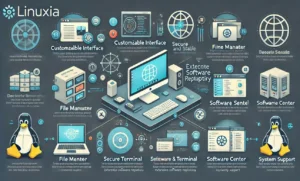The Art of Sanity Testing: Ensuring Software Stability

In software development process, the importance of rigorous testing cannot be overstated. Among the various testing methodologies, one stands out for its ability to safeguard the sanity of software systems – Sanity Testing. In this comprehensive guide, we will explore the intricacies of Sanity Testing, its benefits, and how it contributes to overall software stability and user satisfaction. Whether you’re a software developer, tester, or simply curious about the world of quality assurance, this article will equip you with the knowledge and practical insights needed to master Sanity Testing.
What is Sanity Testing?
Sanity Testing, also known as Build Verification Testing or Confidence Testing, is a fundamental testing technique that aims to quickly evaluate whether a software application is stable and ready for further testing. It is a subset of regression testing that focuses on verifying the basic functionality of the system after minor changes or bug fixes.
The Purpose and Scope of Sanity Testing
The primary purpose of Sanity Testing is to ensure that the critical features, functionalities, and components of a software system are working as expected without conducting an exhaustive and time-consuming testing process. It provides a high-level overview of the system’s stability and identifies any major issues that could hinder further testing.
Sanity Testing is typically performed when a new build or version of the software is released or when minor changes or bug fixes are implemented. It helps detect any glaring issues, such as broken links, missing assets, or critical functionality failures, that may have been introduced during the development or bug-fixing process. By conducting sanity tests, testers can gain confidence in the system’s overall stability and proceed with more comprehensive testing activities.
Key Differences Between Sanity Testing and Other Testing Methods
While Sanity Testing may sound similar to Smoke Testing, there are key differences between the two. Smoke Testing focuses on testing the most critical functionalities of a system to ensure its basic stability and readiness for further testing. It aims to identify showstopper defects that may prevent further testing.
On the other hand, Sanity Testing is more focused and narrow in scope. It aims to validate specific functionalities or areas of the system that have been modified or fixed. Unlike Smoke Testing, which is typically performed after major builds, Sanity Testing is conducted after minor changes or bug fixes. It is a quick and targeted testing approach that verifies critical aspects of the system without delving into exhaustive testing.
Furthermore, Sanity Testing differs from Regression Testing, which involves retesting the entire system to ensure that previously working functionality has not been affected by changes or fixes. While Regression Testing covers comprehensive testing, Sanity Testing is a subset that specifically targets critical functionalities to provide a quick evaluation of system stability.
In summary, Sanity Testing is a focused and efficient testing technique that plays a crucial role in quickly verifying the stability of a software system after minor changes or bug fixes. By understanding its purpose and scope, as well as differentiating it from other testing methods, you can effectively incorporate Sanity Testing into your software development and quality assurance processes.
The Importance of Sanity Testing
Ensuring Stable System Functionality
One of the primary reasons why Sanity Testing is so important is its ability to ensure stable system functionality. By conducting targeted tests on critical features and functionalities, Sanity Testing helps identify any major issues or regressions that may have been introduced during the development or bug-fixing process. This ensures that the software system remains stable and functions as intended, providing a reliable experience to end-users.
Verifying Critical Bug Fixes
Bug fixes are an integral part of the software development lifecycle. After fixing a critical bug, it becomes crucial to verify whether the fix has been implemented successfully and has not introduced any new issues. Sanity Testing plays a vital role in this process as it allows testers to focus on the specific areas that have undergone changes or fixes. By verifying critical bug fixes through Sanity Testing, software teams can ensure that the system remains free from major defects and continues to function optimally.
Testing Interactions Between Components
Modern software systems are often composed of various interconnected components or modules. These components interact with each other to deliver the desired functionality. Sanity testing helps test these interactions between components, ensuring that they work harmoniously and do not adversely affect the overall system performance. By identifying any issues or conflicts during Sanity Testing, software teams can address them promptly, thus enhancing the overall stability and reliability of the system.
Assessing User Experience and Satisfaction
In addition to technical aspects, Sanity Testing also plays a crucial role in assessing user experience and satisfaction. By focusing on critical functionalities and user-facing features, Sanity Testing helps ensure that the software system delivers a seamless and satisfactory user experience. It helps identify any usability issues, performance bottlenecks, or functional gaps that may hamper user satisfaction. By addressing these issues early on through Sanity Testing, software teams can improve the overall user experience and increase customer satisfaction.
In short, Sanity Testing is of utmost importance in software development and quality assurance. It ensures stable system functionality, verifies critical bug fixes, tests interactions between components, and assesses user experience and satisfaction. By incorporating Sanity Testing into the testing process, software teams can enhance system stability, minimize risks, and deliver high-quality software that meets user expectations.
The Sanity Testing Process
Test Case Selection and Prioritization
The first step in the Sanity Testing process is the careful selection and prioritization of test cases. Since Sanity Testing focuses on verifying critical functionalities, it is essential to identify the most important test cases that cover these areas. Test cases should be chosen based on their impact on system stability and the likelihood of uncovering major issues. By prioritizing test cases effectively, testers can optimize their efforts and ensure that the most critical aspects of the system are thoroughly tested.
Setting Up the Test Environment
Before conducting Sanity Tests, it is crucial to set up a suitable test environment. This includes configuring the necessary hardware, software, and network configurations required to execute the tests. The test environment should closely resemble the production environment to ensure accurate results. Setting up the test environment also involves preparing test data and creating any necessary test accounts or user profiles. By ensuring a well-prepared test environment, testers can ensure that the Sanity Testing process is conducted under realistic conditions.
Executing Sanity Tests
Once the test cases are selected and the test environment is set up, it’s time to execute the Sanity Tests. Testers systematically run the selected test cases, focusing on critical functionalities and areas that have undergone changes or fixes. The tests are performed with a specific goal: to quickly evaluate the stability and functionality of the system. This phase involves following the test scripts, recording observations, and noting any deviations or issues encountered during testing. By executing Sanity Tests diligently, testers can identify major defects or regressions that need immediate attention.
Analyzing and Reporting Test Results
After executing the Sanity Tests, the next step is to analyze the test results and prepare a comprehensive report. Testers meticulously review the observations, identify any critical issues, and assess the overall system stability based on the test outcomes. The results should be documented clearly and concisely, highlighting any major defects, performance issues, or areas of concern. The report serves as a valuable reference for development teams, enabling them to address the identified issues promptly.
Additionally, the report also provides stakeholders with insights into the system’s current state and any potential risks or challenges that need to be addressed. By effectively analyzing and reporting test results, testers contribute to the overall improvement of the software system.
In essence, the Sanity Testing process involves:
- Test case selection and prioritization.
- Setting up the test environment.
- Executing the tests.
- Analyzing and reporting the test results.
By following this systematic approach, software teams can ensure that critical functionalities are thoroughly tested, major issues are identified, and necessary actions are taken to enhance system stability and quality.
Practical Tips for Effective Sanity Testing
Prioritizing Test Cases Based on Risk
To conduct effective Sanity Testing, it is crucial to prioritize test cases based on risk. Identify the critical functionalities and areas of the system that are most likely to have been impacted by recent changes or bug fixes. Assign higher priority to test cases that cover these areas, as they pose a higher risk if not thoroughly tested. By prioritizing test cases based on risk, you can allocate resources and efforts more efficiently, ensuring that the most critical aspects of the system are thoroughly evaluated.
Automating Sanity Testing
Consider automating Sanity Testing to improve efficiency and reliability. Automation tools can execute repetitive tests quickly and accurately, freeing up testers’ time to focus on more complex scenarios. By automating Sanity Testing, you can ensure consistent test coverage and reduce the chances of human error. However, keep in mind that not all aspects of Sanity Testing may be suitable for automation. Evaluate the critical functionalities and areas that require human judgment and strike a balance between manual and automated testing approaches.
Creating a Comprehensive Test Plan
A well-defined and comprehensive test plan is essential for effective Sanity Testing. The plan should outline the objectives, scope, and test coverage. It should also document the specific test cases to be executed and their expected results. The plan should also include any necessary test data, configurations, or preconditions required for the tests. A comprehensive test plan provides clarity and guidance to testers, ensuring that the Sanity Testing process is well-structured and consistent. It also serves as a reference for future testing efforts and enables efficient knowledge transfer among team members.
Collaborating with Development Teams
Collaboration with development teams is vital for successful Sanity Testing. Engage in regular communication and collaboration with developers to gain insights into recent changes or bug fixes. Share information about the critical functionalities being tested and any specific areas of focus. Collaborating with development teams helps align testing efforts with development goals and enhances the overall understanding of the system. It also facilitates timely bug fixes and ensures that the system is stable and ready for further testing.
By prioritizing test cases based on risk, considering automation, creating a comprehensive test plan, and collaborating with development teams, you can conduct effective Sanity Testing. These practical tips will help optimize the testing process, increase efficiency, and ensure the stability and reliability of the software system. Remember, Sanity Testing is a valuable technique that plays a crucial role in ensuring the quality of software releases and providing confidence in the system’s functionality.
Examples of Sanity Testing in Action
Website Refresh: Ensuring Core Functionality
Imagine a scenario where a company decides to refresh its website with a new design and additional features. Before launching the updated website, Sanity Testing becomes essential to ensure core functionality. Testers would focus on critical elements such as navigation, forms, search functionality, and key user interactions. They would verify that the website loads properly, links are not broken, and essential features like log-in or shopping cart functionality work seamlessly. By performing Sanity Testing in this scenario, the company can confidently launch the refreshed website, knowing that the core functionality is intact and user experience is maintained.
Mobile App Update: Verifying Critical Bug Fixes
In the case of a mobile app update, Sanity Testing plays a crucial role in verifying critical bug fixes. Let’s say a popular messaging app releases an update to address a major bug that caused crashes during video calls. Sanity Testing for this update would focus on the video call functionality, ensuring that the bug has indeed been fixed and the app remains stable during video calls.
Testers would also check other core functionalities like sending messages, notifications, and contacts synchronization to ensure they are not affected by the update. By conducting Sanity Testing in this scenario, the messaging app can ensure that the critical bug fix has been successfully implemented and the app is ready for users to update and continue enjoying a seamless messaging experience.
Common Challenges in Sanity Testing and How to Overcome Them
Time Constraints and Resource Limitations
One of the common challenges in Sanity Testing is dealing with time constraints and resource limitations. As the testing phase is often limited in time, it becomes essential to prioritize test cases effectively. To overcome this challenge, it is crucial to align with stakeholders and project management to understand the critical functionalities and prioritize them based on risk and impact. By focusing on the most critical areas and utilizing available resources efficiently, testers can ensure that the Sanity Testing process is conducted within the given time frame.
Identifying Critical Test Cases
Another challenge in Sanity Testing is identifying the critical test cases that need to be executed. With a limited scope, it becomes vital to select the test cases that cover the most important functionalities and areas of the system. To overcome this challenge, testers should collaborate closely with the project team, including developers, business analysts, and stakeholders, to gain a deep understanding of the system’s requirements and recent changes. This collaboration helps in identifying the critical areas that require thorough testing and ensures that the most important test cases are included in the Sanity Testing process.
Managing Test Data and Environments
Managing test data and environments can be a significant challenge in Sanity Testing. Testers need to ensure that the test data is relevant and covers various scenarios and that the test environment accurately reflects the production environment. To overcome this challenge, it is crucial to establish effective data management practices, including creating realistic test data sets, ensuring data privacy and security, and maintaining proper data version control. Additionally, setting up a test environment that closely resembles the production environment helps in achieving accurate and reliable results. Testers should work closely with the development and operations teams to ensure the availability and stability of the test environment.
Addressing these common challenges in Sanity Testing can ensure a more effective and efficient testing process. By managing time constraints and resource limitations, prioritizing critical test cases, and effectively managing test data and environments, testers can overcome these challenges and deliver high-quality software that meets user expectations. It is important to approach these challenges proactively, leveraging collaboration, communication, and effective planning to ensure successful Sanity Testing results.
Frequently Asked Questions (FAQs)
What is the difference between Sanity Testing and Smoke Testing?
Sanity Testing and Smoke Testing are both types of software testing, but they serve different purposes. Smoke Testing is a preliminary test that checks if the critical functionalities of an application are working fine before proceeding with further testing. It is a quick and shallow test that ensures the system is stable enough for more comprehensive testing. On the other hand, Sanity Testing is a focused subset of regression testing that verifies the critical functionalities or areas of the system that have undergone changes or bug fixes. It aims to determine if the recent changes have yet to introduce any major issues and if the system remains stable.
When should Sanity Testing be performed in the software development lifecycle?
Sanity Testing is typically performed after receiving a new build or a set of changes to the system. It is particularly useful when time is limited, and the system’s stability needs to be evaluated quickly. It is often conducted after Smoke Testing and before full regression testing. By performing Sanity Testing early in the software development lifecycle, any critical issues or regressions can be identified and addressed promptly, thus saving time and effort in later stages of testing.
Can Sanity Testing replace thorough regression testing?
No, Sanity Testing cannot replace thorough regression testing. While Sanity Testing focuses on verifying critical functionalities and areas, it is not an extensive test that covers the entire system. Thorough regression testing is necessary to ensure that all functionalities, including non-critical ones, are functioning as expected. Sanity Testing acts as a subset of regression testing, specifically targeting areas of recent changes or bug fixes, providing a quick evaluation of the system’s stability.
How long does Sanity Testing typically take?
The duration of Sanity Testing depends on various factors, such as the size and complexity of the system, the number of test cases selected, and the availability of resources. Since Sanity Testing is a focused and targeted approach, it is usually completed within a few hours to a couple of days. However, the exact duration can vary based on project requirements and the specific scope of the Sanity Testing process.
Is it possible to automate Sanity Testing?
Yes, it is possible to automate Sanity Testing to some extent. Automation tools can be utilized to execute repetitive test cases quickly and accurately, improving efficiency and reducing human error. However, it is important to note that not all aspects of Sanity Testing may be suitable for automation. Critical functionalities that require human judgment or complex scenarios may still require manual testing. A balanced approach, combining automation and manual testing, is often the best strategy for effective Sanity Testing.
What are the key deliverables of a Sanity Testing process?
The key deliverables of a Sanity Testing process include a prioritized set of test cases, a well-prepared test environment, executed test cases with observations and results, and a comprehensive report summarizing the findings. The report should document any major defects or regressions found during the testing process and provide insights into the system’s stability and functionality. These deliverables help in decision-making, bug fixing, and improving the overall quality of the software system.
Can non-technical personnel perform Sanity Testing?
While some aspects of Sanity Testing may not require deep technical knowledge, it is recommended to have testers with a good understanding of the system and the testing process. They should possess the necessary skills to effectively execute the test cases, analyze the results, and report any issues or observations accurately. While non-technical personnel can contribute in certain areas, having a team with a technical background ensures a more comprehensive and reliable Sanity Testing process.
How does Sanity Testing contribute to user satisfaction?
Sanity Testing contributes to user satisfaction by ensuring that critical functionalities or areas of the system are thoroughly tested. By verifying these critical aspects, Sanity Testing helps in identifying and fixing major defects or regressions that can impact the user experience. By ensuring a stable and functional system, users can have confidence in the software’s reliability and performance, leading to increased satisfaction and trust in the product.
Are there any specific tools available for Sanity Testing?
Several tools are available for Sanity Testing, depending on the project’s specific requirements. Test management tools like TestRail, Zephyr, or TestLink can help organize and manage the Sanity Testing process. Automation testing tools such as Selenium, Katalon Studio, or UFT can automate repetitive test cases. However, the selection of tools should be based on factors like project needs, budget, and the expertise of the testing team.
What are the common misconceptions about Sanity Testing?
One common misconception about Sanity Testing is that it can replace thorough regression testing. As mentioned earlier, Sanity Testing is a focused subset of regression testing and cannot provide the same level of coverage. Another misconception is that Sanity Testing can uncover all types of defects. While Sanity Testing aims to identify major issues, more is needed to catch all minor or subtle defects. Therefore, it is important to have a comprehensive testing strategy that includes other testing techniques in addition to Sanity Testing.
Additionally, some may mistakenly believe that Sanity Testing is a one-time activity. In reality, it should be performed whenever there are significant changes or bug fixes to the system. Regular and consistent application of Sanity Testing ensures the ongoing stability and functionality of the software.
Conclusion
Sanity Testing is an art that requires careful consideration, prioritization, and execution. By understanding its purpose, benefits, and challenges, organizations can integrate Sanity Testing seamlessly into their software development lifecycle. With the right approach, Sanity Testing contributes to the delivery of high-quality software, ensuring a stable and reliable experience for users. So, let us embrace the art of Sanity Testing and strive for excellence in our software testing endeavors.






